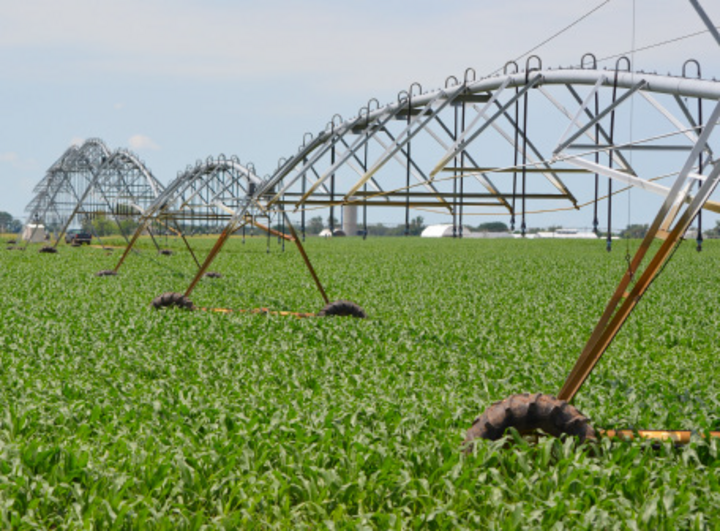
Carbon Sequestration Research
Carbon Farming: Reducing Greenhouse Gases with Crops
Can storing carbon in the soil reduce greenhouse gas emissions? This long-running project looks at carbon sequestration in dryland and irrigated cropping systems.
The overall goal of this research project is to improve our understanding of biophysical controls on soil carbon (C) sequestration and to apply this knowledge towards development of more accurate methods to predict annual C sequestration in light of observed climate variability. Research focuses on C balance measurements within the context of the major agroecosystems of the north-central USA.
Nebraska is uniquely situated for this research because of its location at the intersection of major continental climate zones with both rainfed and irrigated cropping systems.
There is a cluster of three research sites located at the Eastern Nebraska Research, Extension and Education Center. Each site is between 120 and 160 acres in size. Two sites are irrigated using a specially designed center pivot system which will clear the 25 ft tall instrumentation tower located near the middle of the field. The third site is rainfed. Each site employs best management practices to make efficient use of inputs, such as seeding density, fertilizer and pesticide applications. With the cooperation of the ENREEC farm management team, we comprehensive studies are performed of soil C sequestration in these important agroecosystems.

The over-arching hypothesis is two- fold: (1) by improving understanding of biophysical controls on annual C balance, effects of altered climate regimes and diverse management practices on soil C sequestration in these agroecosystems can be predicted and (2) through the use of innovative management practices that increase plant primary production and minimize adverse environmental effects, the major agroecosystems in the north- central USA will substantially increase present rates of C sequestration.
Eddy Covariance System
The net exchange of trace gases is quantified between these agricultural ecosystem and the atmosphere. The eddy covariance technique provides a measure of the vertical flux of a transported entity at a point in the atmosphere by correlating the fluctuations in the concentration of that entity with the fluctuations in the vertical wind speed. This is an in situ technique which causes minimal disturbance to the micro-environment being studied. It requires fast response instrumentation and provides a theoretically sound and relatively direct means of measuring fluxes. The eddy covariance sensors “see” a wedge of the surface extending upwind of the sensors for a distance depending on surface roughness, the height of measurement and wind direction, and provide “spatially-integrated” fluxes.